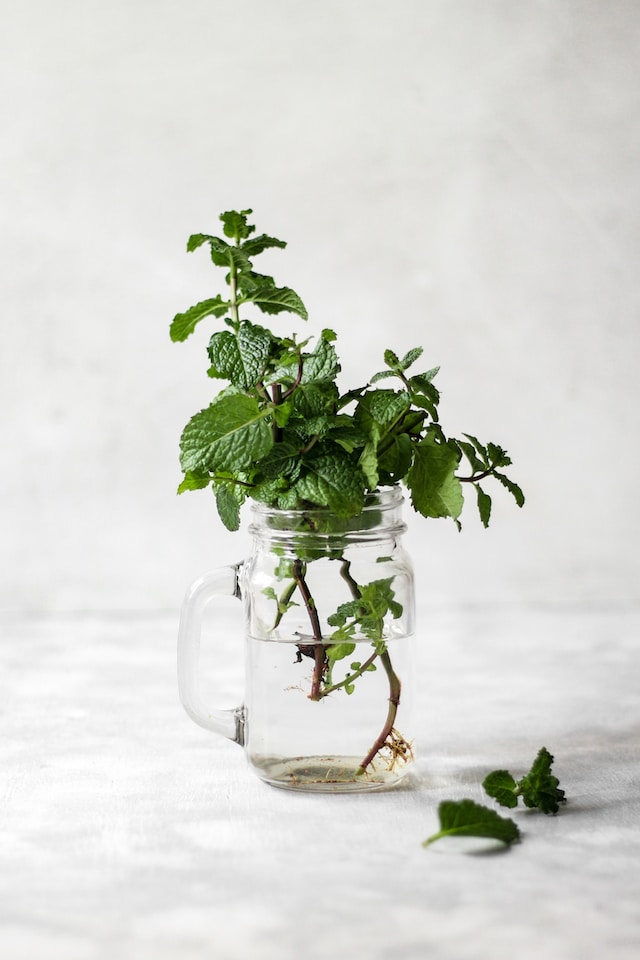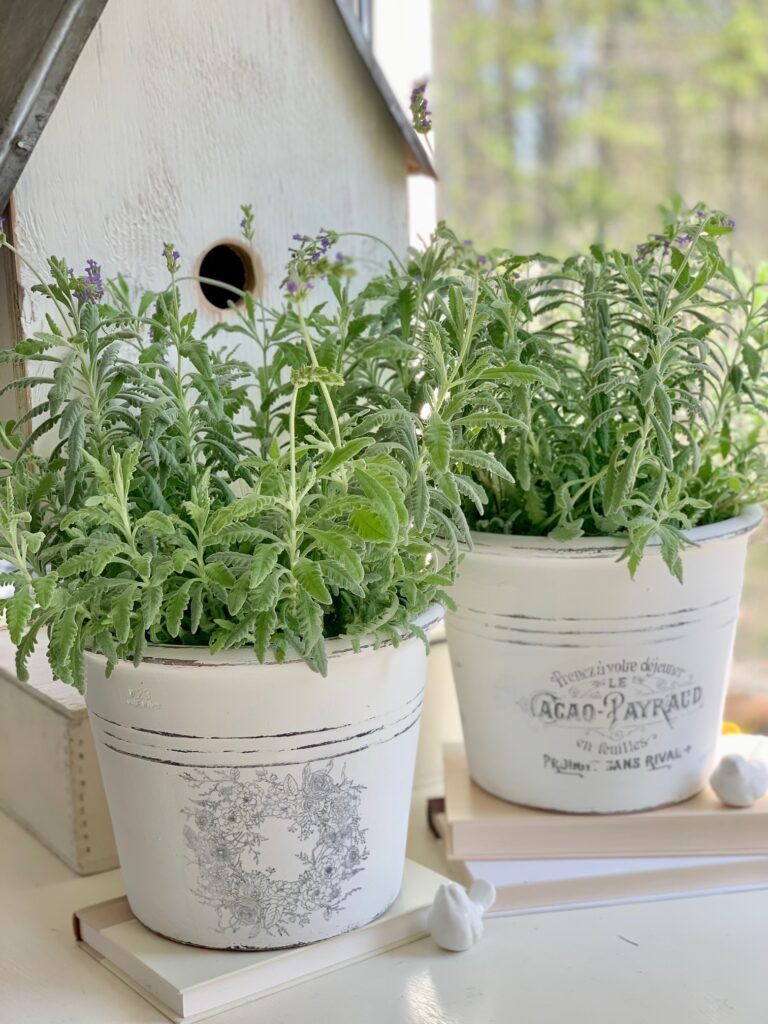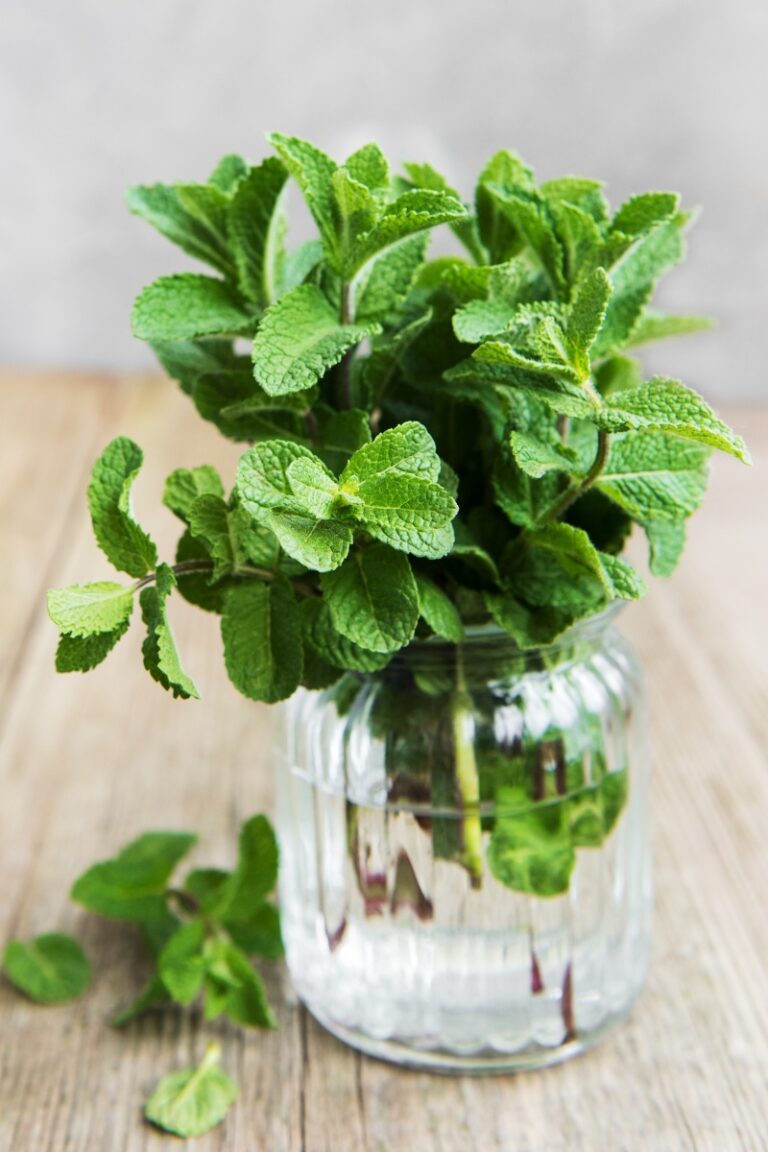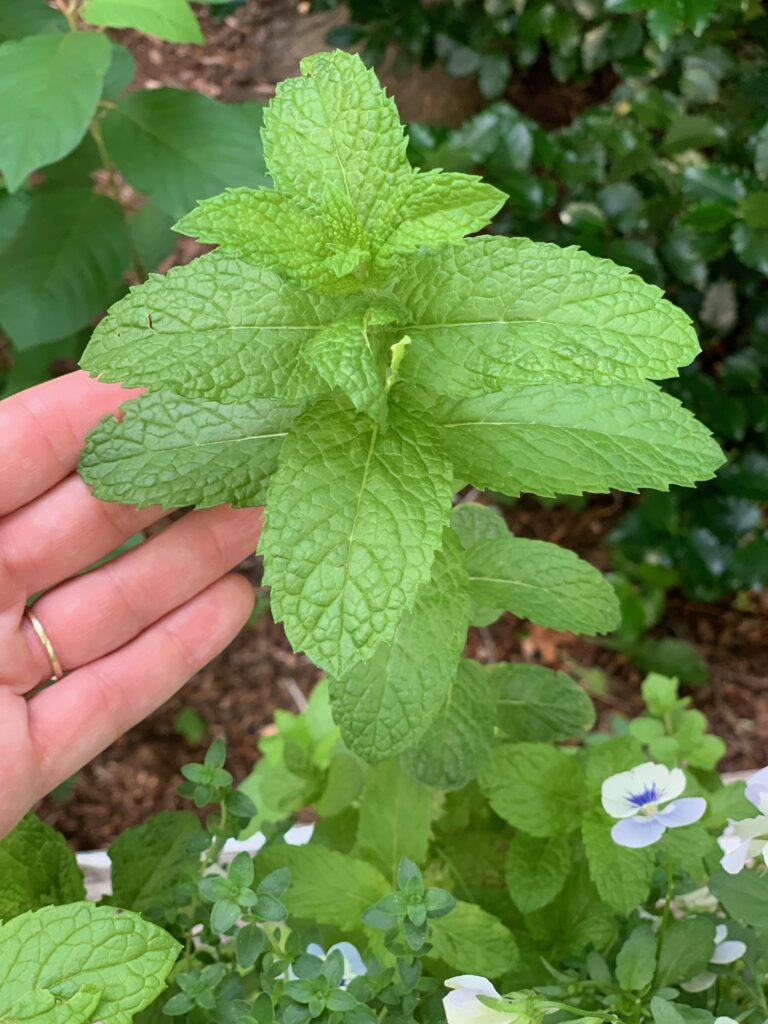Rosemary in Pots: Best Soil Mix, DIY & Commercial
Hey there! So, you’re thinking about growing your own rosemary plant in a pot? Awesome choice! Rosemary is one of those herbs that just adds that special something to your cooking, right? Whether you’re whipping up a savory roast or a fresh marinade, having your own rosemary plant on hand is a game-changer.
I know you’re eager to get growing and start reaping delicious homegrown rosemary rewards right away! But here’s a fair warning from a caring container gardening friend – improperly prepared pots lead to very sad soggy rosemary ends. And we can’t have that negating your from-seed satisfaction!

Lucky for you, through some past soil mishaps of my own, I’m here to share amended mix wisdom so your seedling thrives longterm instead of disappointing you by dying early. Alright, let’s get that green thumb going and start growing some fragrant rosemary!
Content may contain affiliate links. When you shop the links, we receive a small commission at no cost to you. Thanks for supporting my small business.
Growing Rosemary In Pots – Cheat Sheet
Let’s first jump right in with these quick soil tips for growing rosemary in pots!
- Rosemary prefers soil that is well-draining, allowing excess water to escape to prevent root rot.
- Opt for a soil mix that is airy and light, promoting good air circulation around the roots.
- Ensure the soil has good fertility, providing essential nutrients for healthy growth and development.
- Avoid soil that retains too much water, as soggy soil can lead to root rot and other fungal diseases.
- Look for a potting mix that contains organic matter like peat moss to aid in drainage.
- Use pots with drainage holes to allow water to escape freely and prevent waterlogging of the soil.
- Water your rosemary plant when the top inch of soil feels dry to the touch, avoiding overwatering to prevent soggy soil conditions.
With the right soil mix and proper care, your potted rosemary will thrive and provide you with delicious herbs for your culinary adventures!

Comparing Soil Conditions: Potted vs. In-Ground Rosemary
In this section, we’ll explore why potted rosemary requires special attention when it comes to soil conditions. Unlike their counterparts in garden beds, potted rosemary plants face unique challenges due to restricted root space and limited access to surrounding soil moisture.
| Soil Component | Potted Rosemary | In-Ground Rosemary |
|---|---|---|
| Drainage | Requires exceptional drainage and fast permeability to prevent waterlogging. Soil must dry out rapidly between waterings. | Also prefers sharp drainage but stakes or tunnels roots deeper into surrounding native soils, drying moisture. More forgiveness for occasional saturated beds. |
| Moisture Retention | Lean, free-draining mixes best to mimic dry Mediterranean climate. Peat and rich compost hold excess moisture against preferences. | Once established, rosemary is quite drought-tolerant in the ground. Soil can contain some moisture-retentive qualities through mulching and organic matter without detriment. |
Potted rosemary relies 100% on a soil environment providing excellent drainage and allowing quick moisture depletion. In garden beds, the roots access surrounding soil profiles for variable conditions, granting more leeway in soil needs. The container is the plant’s sole moisture regulation source instead.

Importance Of Soil For Potted Rosemary
The soil is of utmost importance for potted rosemary as it plays a vital role in providing essential nutrients, water, and air to the plant’s roots. The right soil can help prevent common problems such as root rot and powdery mildew while promoting healthy growth and new plant development. Picking the perfect soil for potted rosemary can feel like solving a puzzle! Rosemary’s got a bit of sass when it comes to its soil preferences, but hey, we love it for that. It’s all about finding that sweet spot where the soil is well-draining, airy, and packed with nutrients. Adequate soil drainage and aeration allow excess water to escape, preventing the roots from becoming waterlogged and promoting good air circulation around the roots. Additionally, good soil fertility ensures that the plant has access to the necessary nutrients for healthy growth. With the right soil, potted rosemary can thrive and provide fresh herbs for culinary use or decorative delights.

Good Drainage Is Key
One of the most important things to consider when choosing soil for your rosemary is drainage. Rosemary’s roots don’t like wet soil, which can lead to root rot and fungal diseases. So, it’s essential to use well-draining soil that doesn’t hold onto excess water. A good soil mix for rosemary should contain plenty of organic matter, such as peat moss, to help with drainage.
When planting your new rosemary plant, make sure the pot has drainage holes to allow excess water to escape. Be sure to plant your rosemary in a pot that is at least 12 inches deep to allow for good root growth. If you’re planting multiple plants, use a larger pot to give them enough space to grow.
Best Watering Practices
During the growing season, water your rosemary plant when the top inch of soil feels dry to the touch. Avoid overwatering, as this can lead to soggy soil and root rot. In humid conditions, be especially careful not to overwater your plant.
Rosemary is susceptible to powdery mildew and spider mites, so it’s a good idea to provide good air circulation around your plant. Prune lower leaves regularly to promote good air flow. You can also protect your plant from spider mites by placing it in a sheltered spot away from salt spray.
Rosemary’s growing season is from early spring to late summer, and it’s best to plant new rosemary plants in the spring when the soil has warmed up. In the following spring, you can prune your plant to encourage new growth.
There are many varieties of rosemary, including Tuscan Blue, Salvia rosmarinus, and others, with different types of leaves and flower colors. Regardless of the variety, the best soil for rosemary in pots is well-draining soil that doesn’t hold onto too much water.

Optimizing Soil Composition and Drainage for Potted Rosemary
- Soil Composition:
- Rosemary thrives in well-draining soil that mimics the sandy, gritty conditions of its native Mediterranean environment.
- A balanced potting mix for rosemary typically consists of two-thirds compost and one-third horticultural sand or grit.
- Compost provides essential nutrients while horticultural sand or grit promotes drainage and aeration, crucial for healthy root development.
- The sandy and porous nature of the soil mix allows for optimal oxygen circulation around the roots, preventing soil compaction and waterlogging.
- Drainage:
- Adequate drainage is paramount for rosemary plants as they are susceptible to root rot in waterlogged conditions.
- Choose pots with drainage holes at the bottom to allow excess water to escape freely.
- Avoid using saucers under pots that can trap water, leading to soggy soil.
- Ensure the potting mix has good drainage properties to prevent water from accumulating around the roots, which can cause root rot and other fungal diseases.
- Potential Pitfalls:
- Overwatering is one of the most common pitfalls when growing rosemary in pots. It’s essential to water the plant only when the top inch of soil feels dry to the touch.
- Avoid using potting soils with high peat moss content, as peat moss can become hydrophobic when dry, repelling water and leading to inadequate moisture levels for the plant.
- Rosemary prefers low to medium fertility soil. Avoid using overly rich compost or soils with added fertilizers, as this can lead to excessive foliage growth at the expense of flavor and aroma.
- Be cautious of using ordinary beach sand as a substitute for horticultural sand or grit in the potting mix. Beach sand may contain fine particles that hinder drainage and soil aeration.
- In regions with high rainfall, consider increasing the proportion of sand or grit in the potting mix to improve drainage and mitigate the risk of root rot.
By paying attention to soil composition, ensuring proper drainage, and avoiding common pitfalls, you can create an optimal growing environment for your potted rosemary plants. This will promote healthy growth, robust flavor, and aromatic foliage, ensuring a bountiful harvest for your culinary endeavors.

Looking at Commercial Rosemary Potting Mixes
When choosing an off-the-shelf potting mix, it helps to check if the bag specifically advertises suitability for Mediterranean herbs. With rosemary’s preference for exceptional drainage to mimic its rocky native terrain, you want fast permeability.
Some top contenders with blends incorporating drainage boosters like gravel, sand, perlite or bark include:
- Miracle-Gro Cactus, Palm & Citrus Mix
- Espoma Organic Cactus Mix
- Sun Gro Black Gold Cactus Soil Mix
- FoxFarm Ocean Forest Potting Soil
Avoid moisture-retaining sponges and soggy compost-heavy options. Test by wetting a bag handful – your skin should rapidly feel just faint remaining surface moisture. If your hand is still damp after a few seconds, keep seeking better blends! The proper soil for pots makes or breaks herby happiness.
DIY Soil Mix Recipe For Growing Rosemary In Pots
Ingredients:
- 1 part peat moss
- 1 part perlite or vermiculite
- 1 part high-quality potting soil
- Optional: 1/4 to 1/2 part sand (if your potting soil doesn’t already contain sand)
Steps:
- Gather your ingredients and mix them together in a large container or bucket. Make sure to thoroughly mix the ingredients so that they’re evenly distributed.
- If you’re using sand, add it to the mix and continue to mix until it’s well incorporated. Sand can help with drainage and aeration in your soil mix.
- Fill your pot with the soil mix, leaving about an inch of space at the top. This will give you room to water the plant without the soil spilling over the sides of the pot.
- If you’re using a new pot, make sure it has drainage holes at the bottom. If you’re using an old pot, make sure to clean it thoroughly before using it again.
- Place your rosemary plant in the pot and gently press the soil down around the roots to help it settle.
- Water the plant thoroughly, making sure to moisten the soil all the way through.
- Place your potted rosemary plant in a sunny location with good air circulation. Remember that rosemary loves full sun, so try to place it in a spot that gets at least 6 hours of direct sunlight per day.
That’s it! With this simple DIY soil mix, you should be able to grow healthy, happy rosemary plants in pots. Just remember to water them regularly and make sure they’re getting enough sunlight and good air circulation.

Make this Rosemary Topiary using a Grapevine Wreath.
Frequently Asked Questions About The Best Soil For Rosemary In Pots
Rosemary prefers well-draining soil and may struggle in heavy clay soils. However, you can improve clay soil drainage by incorporating sand, gravel, or organic matter into the soil.
Rosemary prefers slightly dry conditions and does not like to be overwatered. Water your Rosemary plant deeply when the top inch of soil feels dry to the touch, typically once every 1-2 weeks, depending on environmental conditions.
Yes, Rosemary can thrive in pots if provided with well-draining soil and adequate drainage holes. Use a potting mix specifically designed for herbs and ensure the pot allows excess water to escape freely.
Rosemary requires plenty of sunlight to thrive. Aim to provide your Rosemary plant with at least 6-8 hours of direct sunlight per day. If growing indoors, place the plant near a sunny window or provide supplemental grow lights.
Rosemary is not a heavy feeder and generally thrives in low to medium fertility soil. If fertilizing, use a balanced, slow-release fertilizer sparingly in the spring to avoid excessive foliage growth.
While Rosemary prefers dry, warm conditions, it can tolerate moderately humid climates with proper care. Ensure good air circulation around the plant, avoid overwatering, and consider pruning to improve airflow and reduce humidity-related issues.
Prune your Rosemary plants in early spring, just before new growth begins. Trim back the plant lightly to shape it and remove any dead or damaged branches. Avoid cutting into old wood as it may impede regrowth.
Several varieties of Rosemary are well-suited for culinary purposes, including Rosmarinus officinalis ‘Tuscan Blue’, Rosmarinus officinalis ‘Arp’, and Rosmarinus officinalis ‘Barbecue’. Choose varieties with robust flavor and aromatic foliage.
Rosemary is a hardy perennial plant that can survive cold winters in USDA hardiness zones 7-10. In colder regions, consider overwintering Rosemary indoors or providing protection during freezing temperatures.

The best way to grow rosemary in a pot is to choose a sunny location, use a well-draining soil mix, and provide good air circulation. Be sure to water your plant enough but not too much, and prune regularly to promote new growth. With the right conditions and soil, you’ll be enjoying fresh rosemary from your herb garden in no time.
Now that you have thriving Rosemary visit these Rosemary-centric post:
- Make Rosemary Sachets
- Make Rosemary Salt
- Make Infused Honey
- Make Infused Oil
- Make Rosemary Scented Candles
Thank you for visiting this best soil for rosemary in pots post. Rosemary is one of my favorite herbs to grow! I hope you found it helpful! Please let me know if you have any questions!







